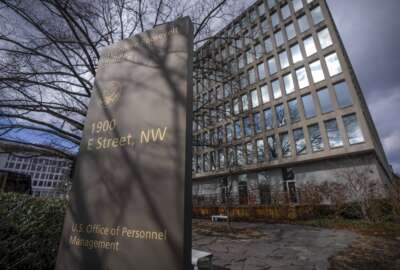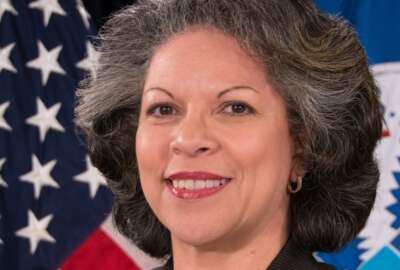Commerce puts the bead on getting broadband established everywhere
"The federal government has long identified as a priority ensuring that we can get as many Americans as possible online in the BEAD program," said Evan Feinman.
The Commerce Department has been pushing for years to ensure every corner of the nation has broadband. One way is through its Broadband Equity Access and Deployment, or BEAD program. Administered by the National Telecommunications and Information Administration. Now the NTIA is working on guidance for states and territories planning to pay for widening broadband. For more on BEAD and the guidance, we turn to program director Evan Feinman.
Interview transcript:
Tom Temin And let’s start at the beginning, the bid program. This is the latest, it sounds like, in a series going way back, I think almost to the Clinton administration in this idea of broadband throughout the country.
Evan Feinman The federal government has long identified as a priority ensuring that we can get as many Americans as possible online in the BEAD program is a real capstone to that work. This program, which was created by the bipartisan infrastructure law, is a $42.5 billion enterprise that is a partnership between NTIA here in the Commerce Department and the various 56 states and territories that are eligible for these funds. And it is the goal of this program and one that we will realize to ensure that every single American, home and business has access to an affordable, reliable, high speed Internet connection.
Tom Temin And since the Clinton administration that’s a number of years ago, hasn’t broadband just organically spread exponentially throughout the country?
Evan Feinman In many parts of the country, it has, and in many parts of the country it is not. There are over 8.5 million Americans who have no access to the Internet and tens of millions more who are underserved as opposed to unserved, whose access to the Internet. It’s too slow to make meaningful use of many of the different opportunities that folks can take advantage of when they have a good, reliable, robust Internet connection. This program is really designed to solve that problem. Underlying the gap is a fundamental math issue. It costs the private sector about the same amount of money to string a mile of fiber in a dense urban area as it does out in parts of the country that are rural and more sparsely populated. And the difference is you might get thousands of subscribers along that mile in a dense urban area. And so it makes sense for the private sector or even a nonprofit or cooperative organization to expend that capital to then bring in that additional revenue. But once density drops too low, it no longer makes sense to invest that capital. And so what we’re doing in partnership with the private sector and working hand-in-hand with our states is closing that gap, back-filling that capital gap so that it makes economic sense for an Internet service provider to build and then operate network even where the number of American subscribers that they could get may be too low to repay directly that entire capital cost.
Tom Temin Right. So how does this work then, from a program standpoint? I’m a county, I’m a territory, or maybe I’m a tribal leader and I want to do this. And do I select the provider and then apply to NTIA for a grant to pay them? Or how does the machinery work?
Evan Feinman Sure. Well, let me answer in specific and then I’ll back up a second, sort of talk through the structure of the program. The short answer is, if you are a local government or a tribal government, you do have the opportunity to select a partner ISP, and bring forward a plan to connect the citizens within the boundaries of your polity. Every tribal and local government has that opportunity by right in the context of this program. But the structure of this program is significantly different from the structure of prior federal efforts. First and foremost, we are making grants only to the 56 states and territories. So I and our program make a grant to the state. And we’ll say state here, states territories is always what we mean, but for simplicity. Each state will then sub grant those funds out to internet service providers according to a plan that they have written and had approved by NTIA. And then those sub grantees will build each of these projects. And so Internet service providers may bring their own projects to the state as well as local and tribal governments may bring projects to the state. The state then has to score those projects according to scoring rubric that was laid out in what was called the state’s initial proposal to NTIA. And the winners of those bids are detailed in what states will their final proposal. And upon approval of that final proposal by NTIA, then construction begins and these networks will be built. The really critical thing that’s different about this program versus prior federal efforts is, again, though, the requirement that the state broadband office, the implementing agency at the state level color in the whole map, we want to see every unserved and every underserved location that’s been identified by the state with a proposal to serve it. And we’ve offered states a variety of different ways to approach that question.
Tom Temin We’re speaking with Evan Feinman. He’s director of the Broadband Equity Access and Deployment Program at the National Telecommunications and Information Administration. But there’s life cycle to these networks. As you mentioned earlier, there’s the laying of cable, that’s specialized work, and you have to have infrastructure for all of that. Then there’s the ongoing operation of the network, making sure the wire is hot, so to speak, the fiber, whatever. And then there is the revenue side to keep the network up to date because things break. In my neighborhood, there’s all these little boxes with holes in the ground and there always somebody digging in there and doing something. So how does this operate over the long term once the capital initially is done of laying the cable and the connections?
Evan Feinman Well, there are a raft of obligations that the sub grantees undertake, which include offering a low cost service option for low income Americans, which include maintaining certain technical characteristics of the network to ensure that they remain useful for the customers at the end of the road. And a series of commitments to the reliability of those networks as they’re operated. And what we’ve done is we’ve built a program that gives states very wide guardrails to chart their path, and a lot of tools to ensure that they’re building the right network for the right circumstance. It is the primary thrust of the program to build as much fiber optic connection as possible. Fiber is the most scalable, most futureproof technology that we have to connect citizens. But the program will also wind up investing in a lot of wireless technologies. And we’ve just announced our alternate technologies approach, which details the ways by which those locations that are their most remote, the most challenging to serve may be served through low-Earth orbit satellites or through unlicensed fixed wireless connections, which can still offer in certain circumstances, really the best way to get folks connected and offer a high quality connection.
Tom Temin Right. So that’s a different architecture. You have to have the download station and then a way of distributing what comes from the satellite to the local people. So there’s a wired and a antenna piece of it, correct?
Evan Feinman Well, there are two different ways that those satellite connections can work. There is the the model that you’ve described wherein you have a local downlink station and then a local wired network or wireless network that feeds off of that. There are also low-Earth orbit networks that serve direct to customer. And so the customers have a small dish and they’re able to access that constellation of low-Earth satellites. And again, those are a good connectivity solution for those remote locations to which we can’t get a terrestrial connection. The reason that those don’t work everywhere is because of the capacity within those networks. It is simply not the case, those sorts of networks could serve all Americans who are in need of service right now. And that’s why we’re building out a wide variety of different technologies to make sure that we’re using the right solution to solve the problem in each different area in which we find the issue.
Tom Temin Sure. And are there any areas where you can just simply maybe it’s marginal, but a certain suburb that might be low income or something and just go to the Verizon’s or the T-Mobile’s and say come on, guys. Just put it out there.
Evan Feinman I encourage any ISP that’s listening to be as aggressive as they can in pursuit of expanding their network to people who are in need of it. But our experience and what prior efforts and early returns from this program are showing is that this model works, and that by offering up subsidy to help the private sector build to reach new customers, the private sector is very interested in doing that. And we support the states in their approach. And the states will, I’m very confident, attract enough partners to get 100% coverage.
Tom Temin And if you look at agriculture, to take an example of something rural that is technologically intensive nowadays, clearly farmers need broadband because of the irrigation technologies and the foot by foot kind of tailoring they can do to their land treatment has revolutionized farming. And so for them, the devices needed to do that, the GPS stuff, the irrigation equipment, the pad you put in your combine are all part of their capital expenditures. What about poor Americans such that you might spend a certain sum for a local area, but then an iPhone is 800 bucks or some decent tablet to take advantage of it is beyond the reach of this program and also beyond the reach of those people’s personal budgets.
Evan Feinman We want to make sure that folks have access to an affordable, reliable, high speed Internet connection. And so one of the first ways that this program, which is an infrastructure program, first and foremost is attacking that problem is by making a requirement of receipt of funds that a low cost service offering is offered. That service offering is defined by the state in which a person resides and been approved by NTIA. We thus far seen 55 of the 56 states and territories with approved plans. The 56 are still working on its complex, but there is also going to be an opportunity in a set of states to go further. If a state within the context of its allocation, so we we divvied up the $42.5 billion pot among the various states and territories on the basis of need. If a state is able to finish its infrastructure mission under budget, it may then use the remaining funds within its allocation for a wide variety of digital opportunity and digital equity programing, which could include device provision and it could include digital literacy classes, it could include explicit connected agriculture programing or telehealth programing or additional infrastructure to further harden or make resilient the network or expand other network capacities. All of those are options that we’re in dialog with states now on. And we’re excited to see what the creativity and commitment to service all 56 of our state and territory partners bring us in that category as we move forward in the program.
Tom Temin Has any money actually moved out yet? Or you just have the plan and the divvying up? But the money is still yet to be, do you still have to look at the plans and approve them?
Evan Feinman So where we are in the process right now, we are on time and on track to connect every American to that affordable, reliable, high speed Internet service. Broadly, under the Biden-Harris administration, thousands of homes and businesses have already been connected. We in the BEAD program have already obligated funds to 55 of 56 territories. It is now for the territories, states and territories to set about their sub grantee process. And so that is underway in a handful of states, and will continue to initiate in the remainder over the coming year. And we need them to work with the private sector to stack up those projects to ensure coverage to every single location. This is by design, a state led program. And so some states are really sprinting out to the four, other states are taking a more deliberate approach. Both have arguments to commend them. And we’re excited to work with states in the manner in which they want to work on this program. And we’re really, really, really quite pleased to see the progress moving forward.
Copyright © 2024 Federal News Network. All rights reserved. This website is not intended for users located within the European Economic Area.
Tom Temin is host of the Federal Drive and has been providing insight on federal technology and management issues for more than 30 years.
Follow @tteminWFED






